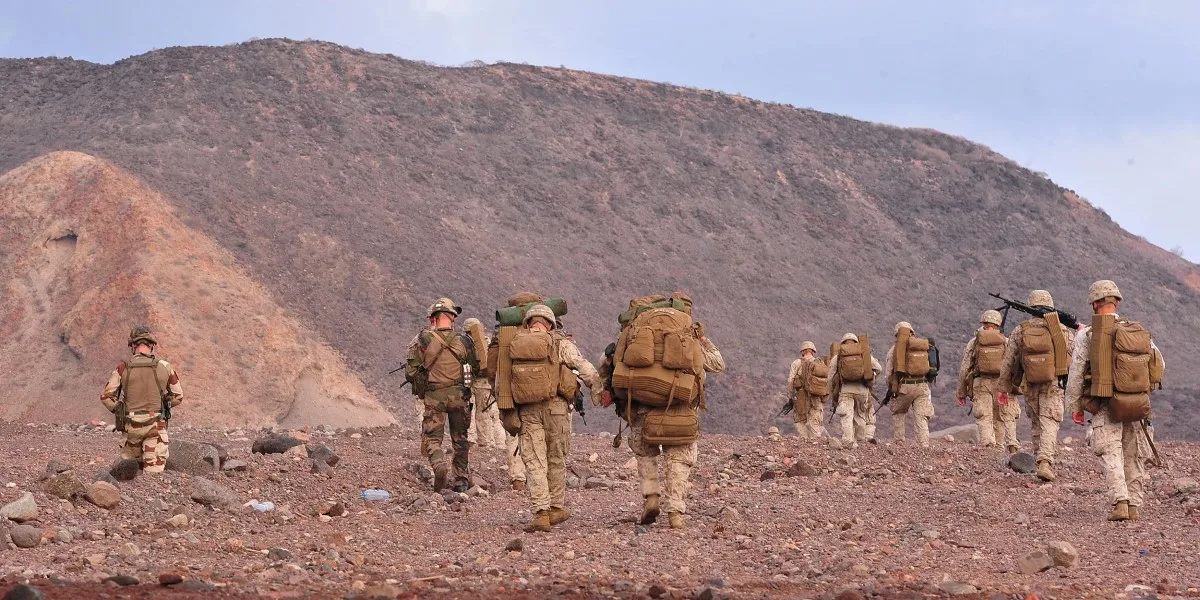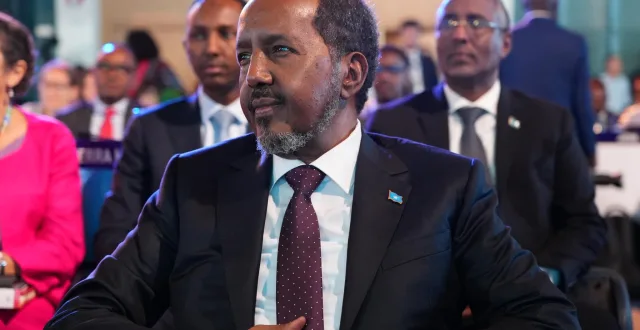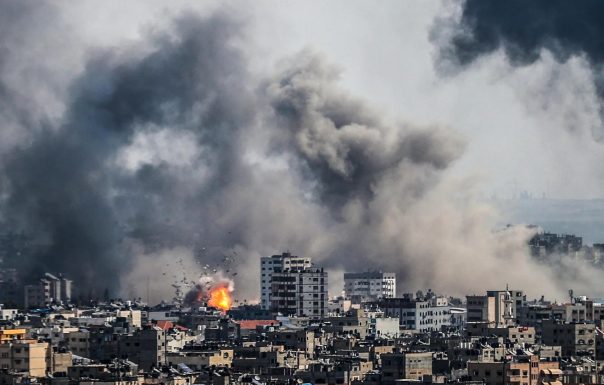A 2007 Defense Department study found glaring problems with America’s Horn of Africa campaign plan. The…
A 2007 Defense Department study found glaring problems with America’s Horn of Africa campaign plan. The U.S. military plunged ahead anyway.

THE PENTAGON HAS known of fundamental flaws with U.S. military operations in the Horn of Africa for nearly 20 years but has nonetheless forged ahead, failing to address glaring problems, according to a 2007 study obtained exclusively by The Intercept.
“There is no useful, shared conception of the conflict,” says the Pentagon study, which was obtained via the Freedom of Information Act and has not previously been made public. “The instruments of national power are not balanced, which results in excessive reliance on the military instrument. There is imbalance within the military instrument as well.”
The 50-page analysis, conducted by the Institute for Defense Analyses, a private think tank that works solely for the U.S. government, is based on anonymized interviews with key U.S. government officials from across various departments and agencies. It found America’s nascent war in the Horn of Africa was plagued by a failure to define the parameters of the conflict or its aims; an overemphasis on military measures without a clear definition of the optimal military strategy; and barriers to coordination between the military and other government agencies like the State Department and local allies like the Somali government.
After more than 20 years of U.S. efforts, the Pentagon’s own metrics show that America’s war in the region was never effectively prosecuted, remains in a stalemate or worse, and has been especially ruinous for Somalis.
“Damn, this almost could have been written yesterday,” said Elizabeth Shackelford, a former State Department Foreign Service officer who served in Somalia, after The Intercept shared the full IDA analysis with her. “I’ve known these problems have persisted throughout my career with the U.S. government, but I didn’t quite expect this has been thoroughly studied, by DoD, with these issues conclusively identified and yet not addressed for two decades now.”
FROM THE VIETNAM WAR of the 1960s and ’70s to the U.S. war in Afghanistan from the 2000s to the 2020s, the Pentagon — and the Office of the Secretary of Defense in particular — has taken an active interest in investigating its failures, even as it has publicly claimed progress. Like the Pentagon Papers, the top-secret history of the Vietnam War commissioned by then-Secretary of Defense Robert McNamara, and the Afghanistan Papers, a collection of internal interviews and memos documenting problems with the U.S. effort in Afghanistan, the IDA study demonstrates that U.S. officials were aware of structural defects in American efforts in Africa from the earliest days of the conflict.
In 2002, the U.S. military established the Combined Joint Task Force–Horn of Africa, or CJTF-HOA, to conduct operations in support of the global war on terror in the region. That same year, U.S. Special Operations forces were dispatched to Somalia. They were followed by conventional forces, helicopters, surveillance aircraft, outposts, and drones.
Commissioned by the Office of the Secretary of Defense and conducted from 2003 to 2007, the IDA analysis, “Achieving Unity of Effort: A Case Study of US Government Operations in the Horn of Africa,” was designed to understand the “national security challenges” faced by the U.S. government writ large in the Horn of Africa and improve policies and their implementation.
In 2007, the year the IDA report was completed and U.S. Africa Command, or AFRICOM, began operations, the U.S. conducted its first declared airstrike in Somalia. Since then, it has carried out more than 280 air attacks and commando raids, aimed primarily at the terrorist group al-Shabab, while the CIA and elite troops created local proxy forces to conduct low-profile operations on behalf of the United States. At the same time, the U.S. has provided Somalia with billions of dollars in counterterrorism assistance.
All this went on despite deep-seated problems identified by IDA researchers at the beginning of the conflict. Interviews with senior U.S. government officials about the Global War on Terror convinced the IDA team of flawed coordination between U.S. government agencies and a need for a unified strategy.
The IDA study team “could not find documentation for a ‘whole of government’ U.S. strategy that would compel the coordination of all USG efforts in the region of the Horn.” Lacking an “organizing principle” for U.S. efforts there, roles and missions were murky, and agencies were sometimes “in conflict over ends, ways, and means” to prosecute the war. The team also found that counterterrorism and counterinsurgency strategies were “competing rather than complementary in the Horn.”
The IDA researchers not only interviewed senior government officials but also rank and file personnel working on the ground in the Horn of Africa for the military, the State Department, and the U.S. Agency for International Development. Some interviewees told the research team that “establishing a combatant command in Africa puts too much emphasis on the military arm of U.S. foreign policy.” But the Pentagon pressed ahead, establishing AFRICOM “to work with Africans to bring peace and security to their continent.”
In 2010, the Government Accountability Office examined CJTF-HOA and found a host of problems akin to those mentioned in the IDA study. The task force was “generally not setting specific, achievable, and measurable goals for activities”; had made “cultural missteps” that undermined U.S. efforts and put additional burdens on other government agencies; and was not doing enough to determine whether its efforts were “having their intended effects or whether modifications are needed to best align with AFRICOM’s mission.”
IN A 2016 interview with researchers for the Special Inspector General for Afghanistan Reconstruction, James Dobbins, a former senior U.S. diplomat who served as a special envoy to Afghanistan under Presidents George W. Bush and Barack Obama, offered a frank assessment of U.S. military aims there. “We don’t invade poor countries to make them rich,” he said. “We don’t invade authoritarian countries to make them democratic. We invade violent countries to make them peaceful and we clearly failed in Afghanistan.”
The same could be said of Somalia. The IDA study lamented the “presence of al-Qaeda” in the Horn of Africa and the “failed state of Somalia.” Both remain realities despite two decades of forever war. Twenty years after the IDA’s research began, AFRICOM called al-Shabab “the largest and most kinetically active al-Qaeda network in the world.” The Fund for Peace’s most recent “fragile states index,” which effectively measures “failed state” status, ranked Somalia first.
America’s “objective is to produce a level of security and stability that denies sanctuary and opportunity to our enemies,” said the IDA study. But two decades into the conflict, security and stability have been in short supply for Somalis. Death and destruction have, however, been on the rise. Last year, deaths in Somalia from Islamist violence hit a record high of 7,643 — triple the number in 2020, according to the Africa Center for Strategic Studies, a Pentagon research institution.
In addition to a 22 percent rise in fatalities from terrorism in Somalia from 2022 to 2023, violence has increasingly bled across the border into Kenya which saw deaths from al-Shabab attacks double over the same span.
In a conference call with The Intercept and other reporters last month, the Biden administration’s special envoy for the Horn of Africa, Michael Hammer, said the United States is “focused on trying to alleviate the suffering that we’ve seen throughout the Horn,” adding that “we are prepared to remain very much engaged, not only to end the conflicts but also to help Africans in the Horn of Africa build a better future for themselves.”
The IDA study offers answers about why the United States is still “trying” to alleviate suffering and end conflicts in the Horn of Africa after 20 years of effort and billions of U.S. tax dollars. Experts say that lawmakers in both parties need to come together to end America’s failed campaign there.
“It will surprise no one to hear that the U.S. lacked an achievable or coherent strategy in this region from the beginning. But it’s still stunning when new information reveals just how adrift the policy has been,” said Erik Sperling of Just Foreign Policy, an advocacy group critical of mainstream Washington foreign policy. “With so many pressing crises in the world, it’s deeply disturbing that this failed and counterproductive approach could easily continue for another decade or more. Hopefully, after 20 years, there can be some bipartisan consensus to rein in this war and bring it to a close.”
By: Nick Turse
The Intercept


